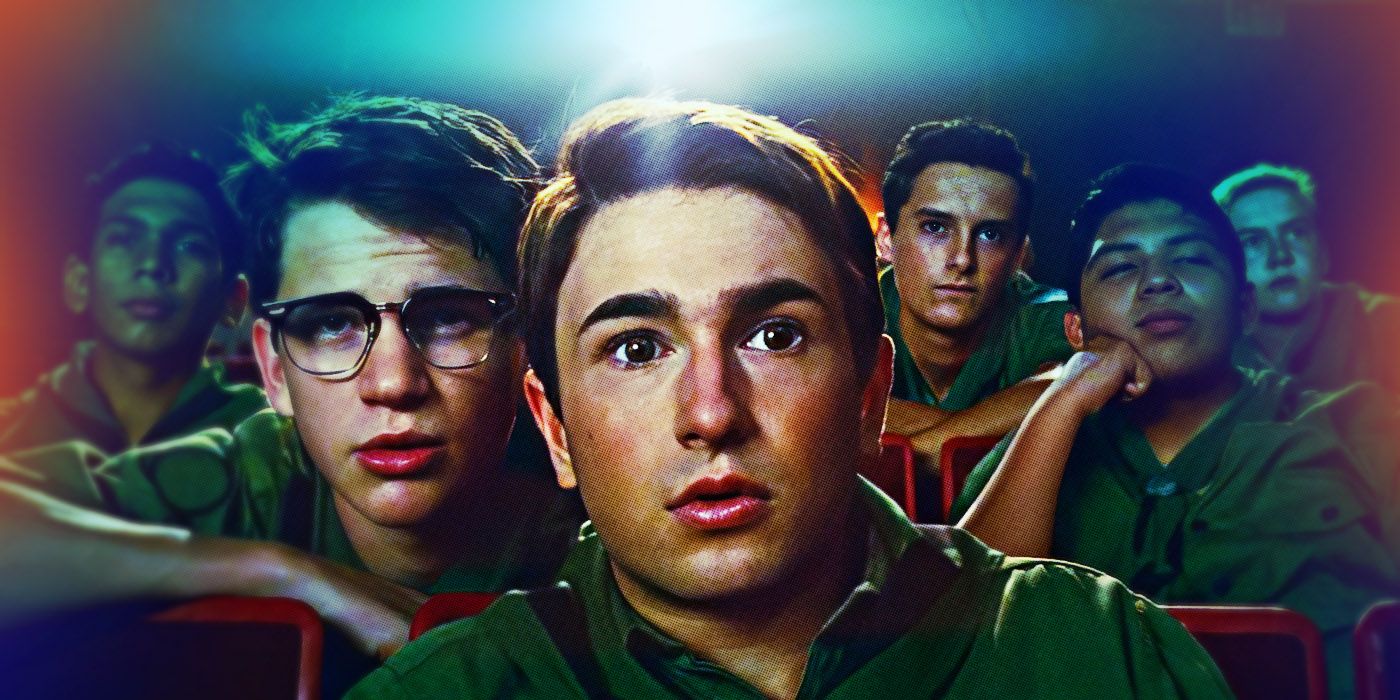
For all of its innovative plots and wild ideas, so many of the horror genre’s scariest concepts come from real life. Many creators understand the everyday fears that people go through, the everyday stress and worries that can be used to fuel whatever petrifying project they’re trying to make. One of these is the horrors of Hollywood, with movies trying to capture just how terrifying the entertainment industry can be for those trying to succeed within it — though none do as well as Kevin Kölsch and Dennis Widmyer’s Starry Eyes.
The film’s premise is a common one: a down-on-her-luck actress is desperate to become famous, eventually becoming entangled with insidious forces hoping to use her for something much darker than a starring role. Many films use scares to represent the real abuse faced by aspiring performers, but none are as exceptional in painting how truly horrid this industry can be, because Starry Eyes is unafraid to do one very important thing: it gets dirty. Rather than saving its disgust for some climactic ending or having it occur off-screen, the plot uses every moment to portray the legitimately unnerving effects this kind of treatment has on its victims (both physically and mentally). It goes to bloody, disgusting lengths that no other film does, and in doing so, it helps viewers understand a fraction of what so many performers go through every single day.
‘Starry Eyes’ Asks Who Doesn’t Want to Be Famous?
While all the best horror movies offer a hero for audiences to root for, watchers rarely see a character as endearing as Starry Eye’s protagonist, Sarah (Alexandra Essoe). An aspiring actress, the well-meaning woman’s life isn’t easy; whether it be her disappointing day job or the pretentious friends who constantly belittle her (when they’re not trying to steal work from her), she lacks any real support in her dream to become a movie star. She feels her luck change when she lands an audition for the famous Astraeus Pictures, making her extra disappointed when the casting director seems disinterested in her talent — until she finds Sarah afterward, tearing out her own hair in a moment of pure anger and frustration. This scene tells the director two very important things: Sarah isn’t in a healthy state of mind, and she’s willing to do anything to become famous. Which means she’s a perfect candidate for the production company’s abuse, with this ominous group steadily breaking the woman’s boundaries and subjecting her to so many of the attacks faced by real-world actors and actresses today. It completely degrades her from the inside out, setting off a visceral, trauma-fueled metamorphosis that the audience is forced to watch.

Related
Movies Gave Me an Unrealistic Expectation of Working In a Cinema
A story of an ex-usher, and the movies about the movies.
There have been many films that try to capture the horrors of Hollywood, with hits like The Neon Demon showing how a person can be used and discarded by an industry that’s always looking for the “next big thing.” But Starry Eyes sets itself apart by highlighting how utterly disgusting this toxic cycle is. It does this through the harsh metaphors of its stomach-churning gore, yet even without blood, the movie makes viewers uncomfortable; Sarah’s life before her demonic abuse is already a terrible showcase of how cruel people can become in a line of work that encourages competition. Then, once the production company gets involved, the toxicity of her outer life begins to invade Sarah’s internal self, with viewers watching visceral scenes of her body rotting alongside her mental state under the effects of this mistreatment.
These are truly disturbing moments, with scenes like Sarah vomiting up maggots or her rotten nails falling off showing the effects of the production companies’ abuse — which is the point of the whole movie. Because the company’s actions are, sadly, not too different from how some Hollywood professionals treat hopeful stars today (sexual assault, constant gaslighting, verbal harrassment, etc.), and the way it completely tears apart Sarah is an apt representation of the massive trauma survivors are forced to face every single day.
‘Starry Eyes’ Is Gross — That’s the Point
While Starry Eyes does well at using its horror as a metaphor for Hollywood, many other movies have had similar goals, with each being vital in ongoing conversations about how to make this industry safe for all. Yet while all are important, no movie is as willing to show the dark, disgusting parts of this toxic industry like this one. It’s an unflinching portrayal of the kinds of attacks that have a long-documented history in the business, and while the supernatural horrors that Sarah faces are dramatized, they help audiences understand the real effects that abuse has on the people forced to move on from it. How actions like these are attacks that exist on an emotional, mental, and physical level, leaving somebody feeling as terrible as Sarah does without any of the physical signifiers — making the pain harder to see, and making it easier for perpetrators to do it again. This film brings the horrors of abuse to the forefront in a guttural, disgusting way, and in doing so, it has viewers see the true impact that the “horrors of Hollywood” have on those who this cutthroat industry has hurt.
Starry Eyes is Available to Stream on Philo in the U.S.
WATCH ON PHILO
Starry Eyes
- Release Date
-
July 29, 2014
- Director
-
Kevin Kolsch
, Dennis Widmyer - Runtime
-
98 minutes






